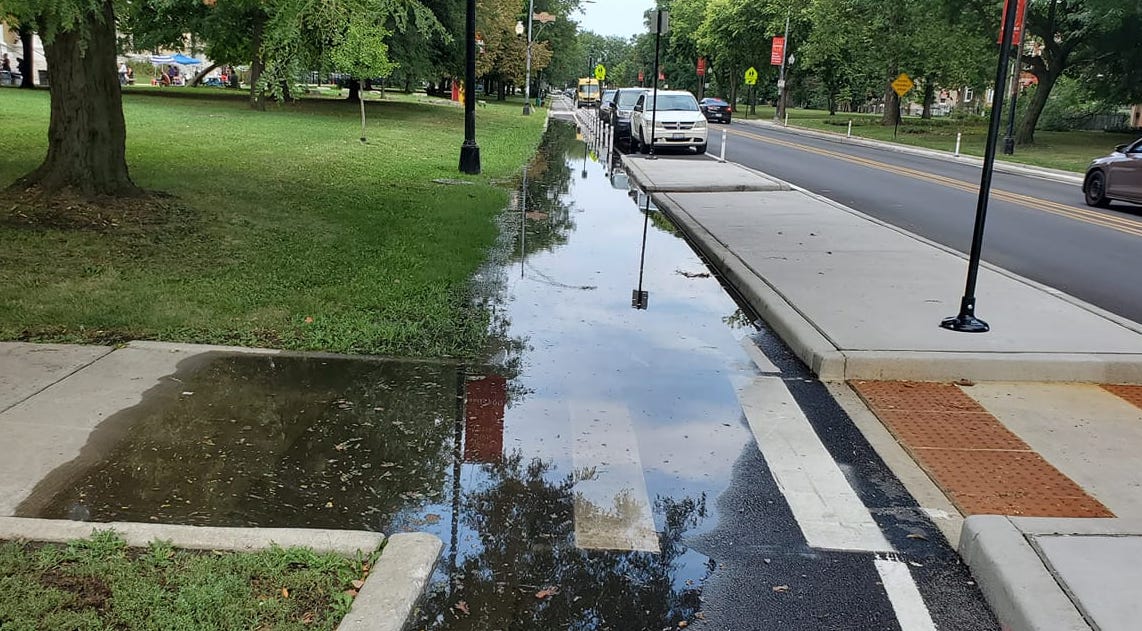
The good news: The Chicago Department of Transportation has largely finished a 1.5-mile Complete Streets project on 24th Street/Boulevard between Pulaski Road and California Avenue in Little Village, including protected bike lanes.
The bad news: Longtime local residents and sustainable transportation advocates says there are major downsides of how the project has been executed, including drainage problems, and a lack of full bikeway protection.
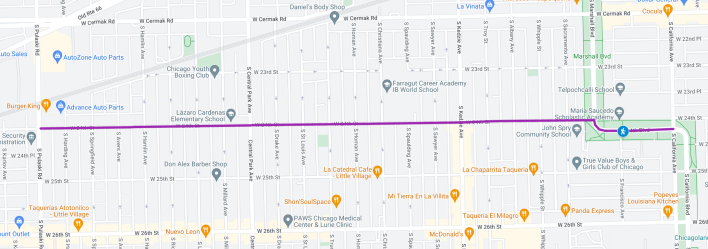
Here's a rundown of the project, according to CDOT. On the one-way eastbound stretch of 24th Street between Pulaski (4000 W.) and Marshall (about 2900 W.), the department has striped a contraflow, "wrong-way" bike lane. This legalizes westbound cycling and helped make other road users more aware of westbound bike riders, which helps prevent crashes. The speed limit has been lowered to 20 mph. "This route connects to several important neighborhood destinations, including Lazaro Cardenas Elementary School, Farragut Career Academy, and John Spry Community School," CDOT says.
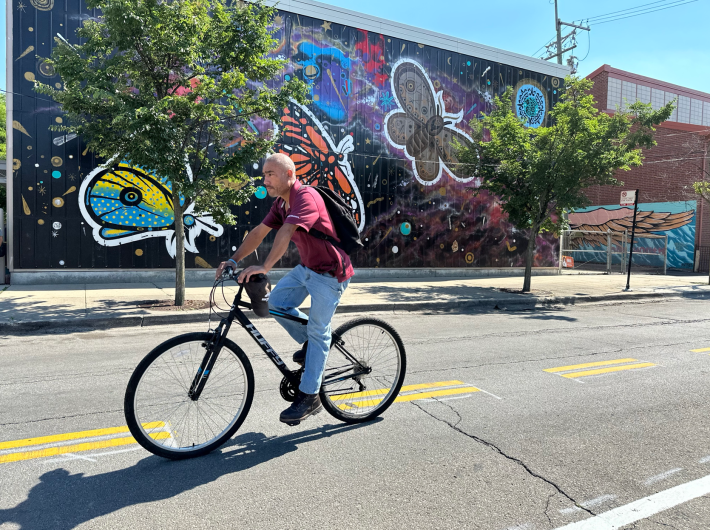
On the short stretch of 24th Boulevard between Marshall and California (2800 W.), the department has installed some protected bike lanes.
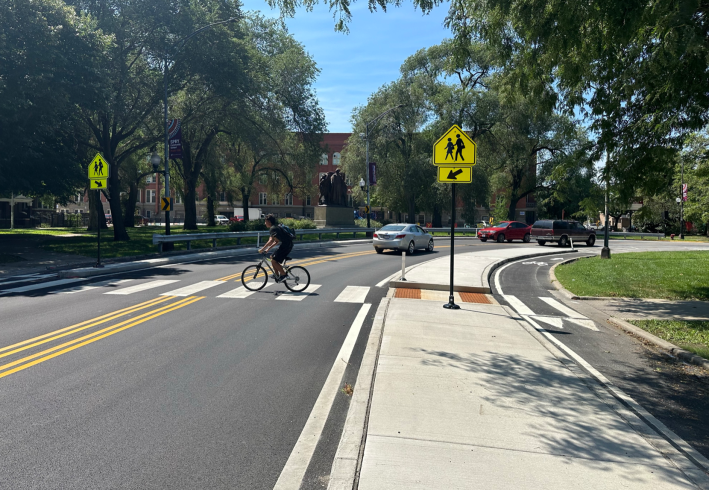
CDOT also put in a mid-block raised crosswalk in front of Saucedo Academy, 2850 W. 24th Blvd.
That all sounds pretty good, right? But Laila and Dan Korn say the new project is much better in theory that it is in practice. The couple live in a cooperatively owned building called The Hub, located near the corner of 24th and Marshall boulevards. They founded the co-op in 2005 with fellow walk/bike/transit advocates they met through the monthly Chicago Critical Mass bicycle ride.
The Korns say that for years, from their home they've watched drivers speed around the sharp curve where Marshall Boulevard turns into 24th Boulevard. When 24th Boulevard reaches California Avenue, it curves south and is then known as California Boulevard.
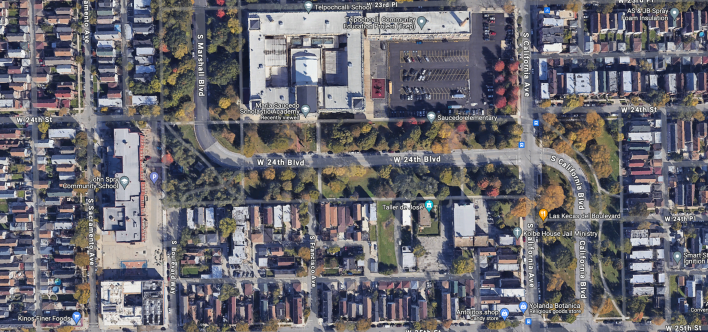
They’ve watched CDOT replace a guardrail on the southwest corner of Marshall/24th boulevard "several times" after drivers who miscalculated their speeds on the turn crashed into the barrier, Laila said. And it was dangerous for families and students to cross 24th Boulevard east of Marshall when walking to and from Saucedo Academy. It was also tricky to cross Marshall to access Spry Community School to the west.
Dan Korn recently posted on Facebook that drivers have long used this route as a high-speed corridor. "They call it the '2900 expressway', as the run of 24th, Marshall, and Sacramento [in Douglass Park, a few blocks north of 24th] boulevards has fewer lights and stop signs than California Avenue, and people tend to drive fast."
So the Korns and their neighbors were pleased that the City was adding more traffic calming to the area to encourage safer speeds, and protection for people on foot and bike. But Dan posted, "I give them a B for effort and a D for execution."
Dan explained that last year CDOT installed curb extensions at most of the Marshall crosswalks, "which in itself is great, as it reduces the length of the crossing for pedestrians." He added that the department added higher-visibility markings to the two crosswalks on either side of the 24th/Marshall curve, which are supported by crossing guards during the school year.
The new sidewalk-level raised mid-block crosswalk at Saucedo makes crossing easier for pedestrians. It also helps slow down drivers approaching the Marshall curve from the east, which reduces the risk of crashes.
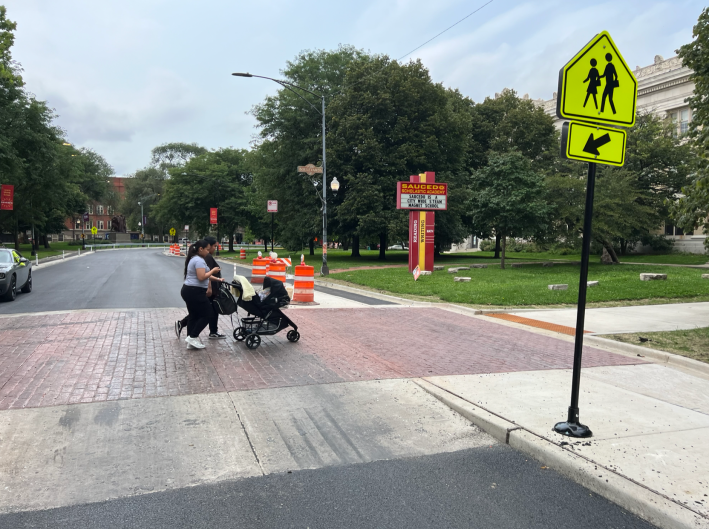
But Dan noted in his post that “It seems another raised crosswalk on the Marshall side would have also been effective (especially at slowing drivers ahead of the curve, going eastbound onto 24th Blvd), so we question why CDOT did not include one there as well."
In early August, CDOT installed concrete curb-separated bike lanes at the 24th/Marshall curve. But the department didn't add this protection all the way to California. Instead, east of the curve on 24th Boulevard, the bikeway is still just painted, non-protected lanes.
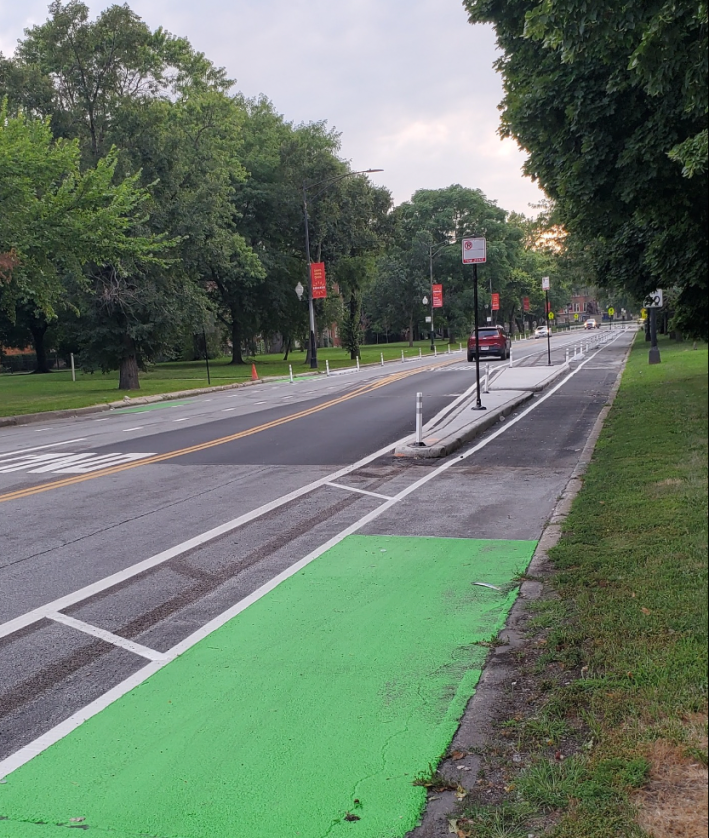
The Korns wonder why the concrete bike lane protection was not extended further from Marshall/24th. That's especially true north of the curve on Marshall, where the bike lanes and mixed-traffic lanes converge with no protection. When I recently visited the area with Dan, we saw drivers repeatedly drifting across the painted line, into the bike lane, while making the turn. This squeezes bike riders against the aforementioned curb extensions at Marshall crosswalks.
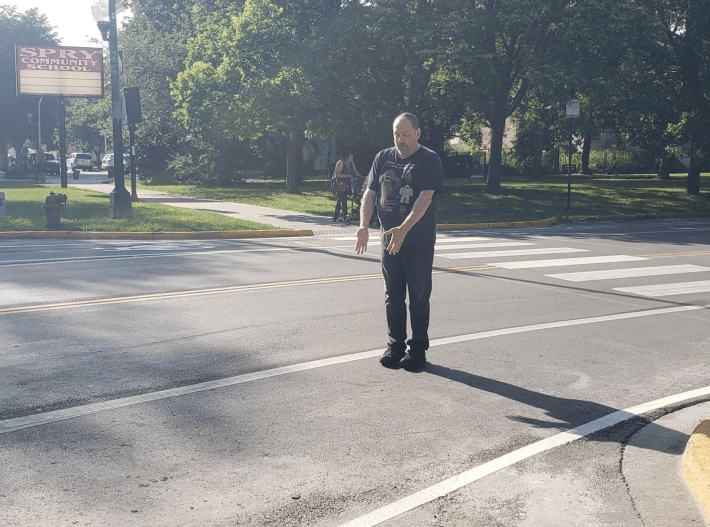
On top of that, the Korns say the stretch of concrete protected bike lane on 24th Boulevard in front of Saucedo has had drainage issues ever since it was installed. Days-long flooding has been a problem with a few of Chicago's newer protected lanes.
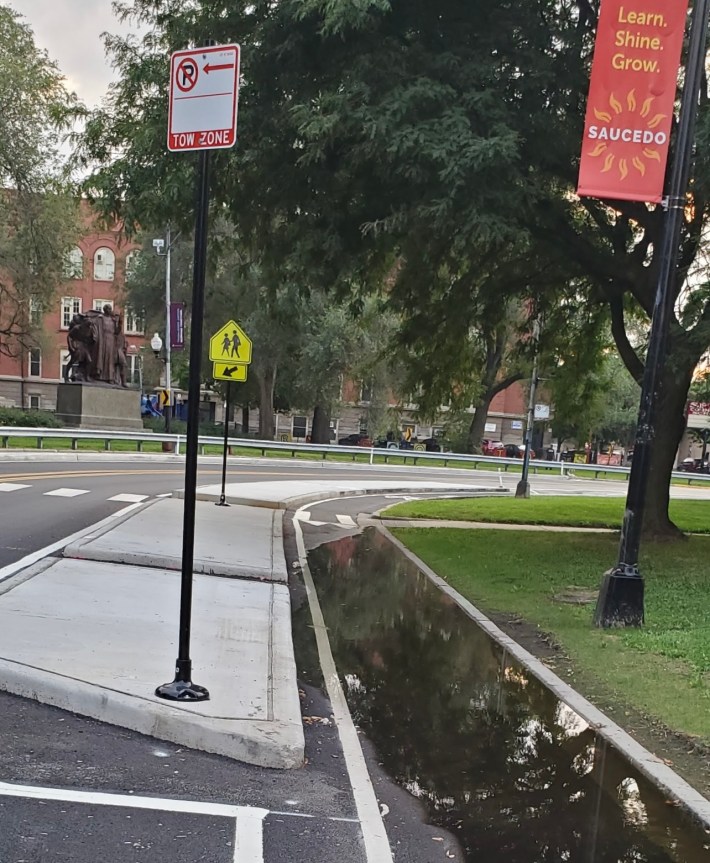
When Dan saw a water department crew visiting the flooding area recently, the workers told him fixing the problem would have to wait. "The crew said they needed to get that big truck over by the drain to clear it," he posted on Facebook. "They didn't want to drive over the concrete that divides the bike and car lanes, because the truck is very heavy and the concrete is 'green,' that is, it hasn't had much time to cure and strengthen, and they worry that it might just collapse."
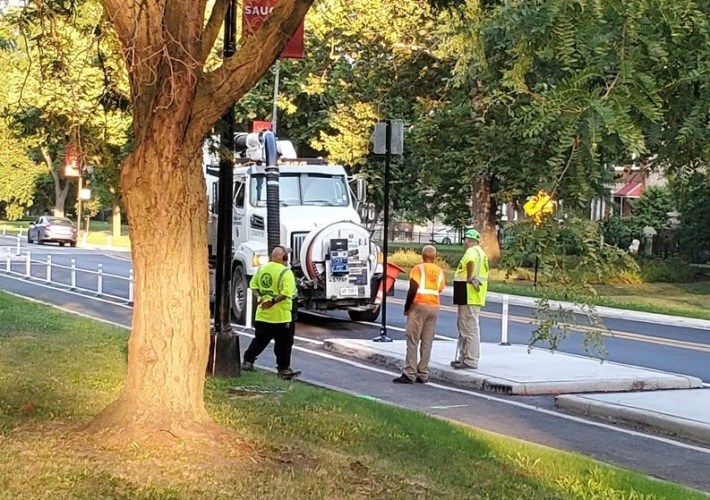
Just east of this stretch, directly in front of the school, the curb separation becomes a non-protected, de-facto parallel parking lane. If past years are any indication, Dan said he "strongly suspects drivers will continue to park illegally in the bike lanes, and even possibly on the concrete separators."
Indeed, today on the first day of Chicago Public Schools classes, Dan documented many drivers blocking the bike lanes while making pickups and drop-offs. Read his Facebook post on the subject here.
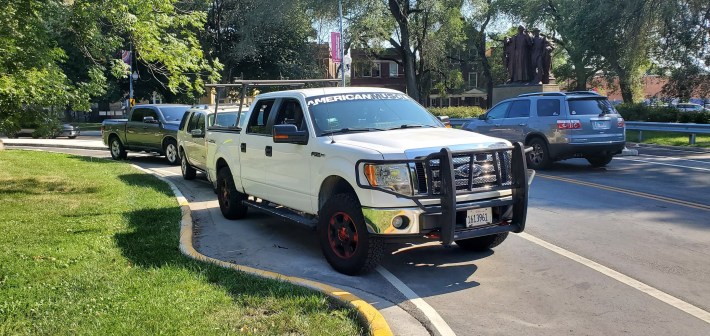
At the very least, the City must resolve the flooding problem as soon as possible. And hopefully CDOT will add concrete protection further east on 24th, and north on Marshall, so the bike lanes won't just be used as car parking lanes.

Did you appreciate this post? Please consider making a tax-deductible donation, to help keep Streetsblog Chicago's sustainable transportation news and advocacy articles paywall-free.
